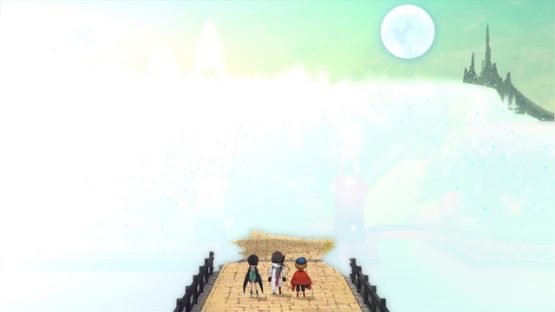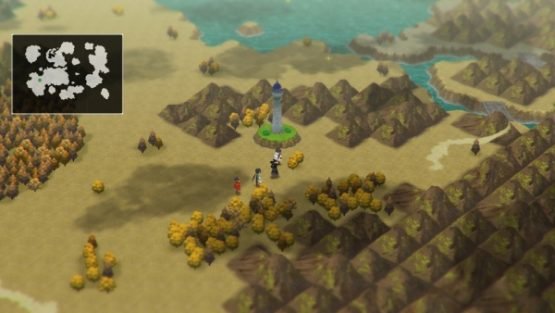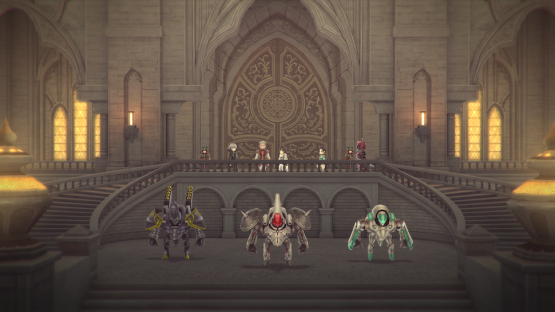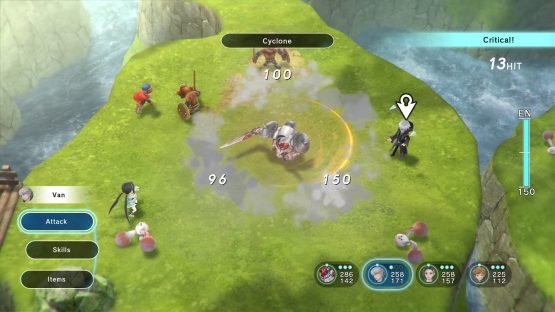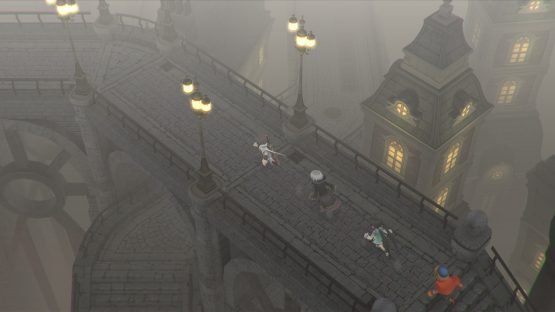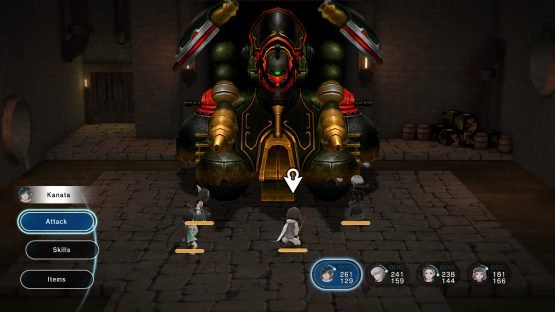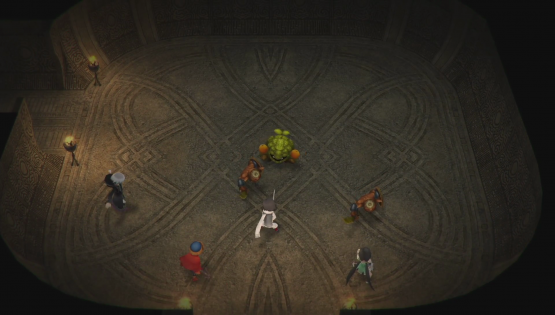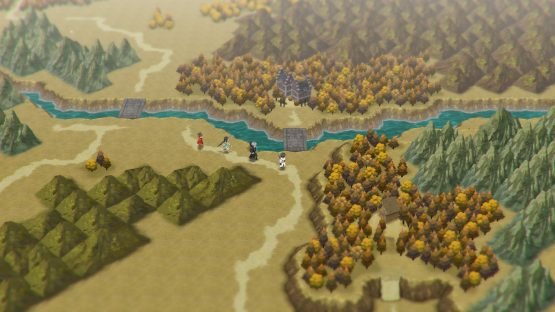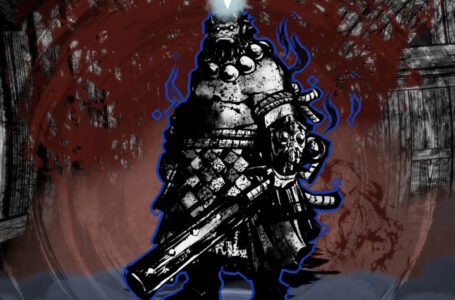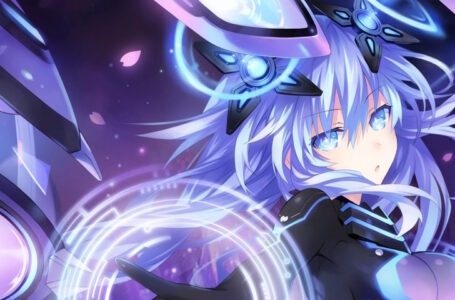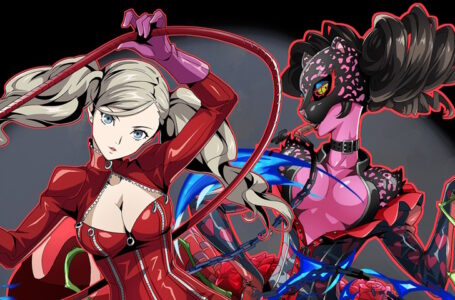Lost Sphear Review – Lost & Not Found (Switch)
Tokyo RPG Factory’s mission statement is to make retro-styled JRPGs like the good old days — such as Chrono Trigger, or the old Final Fantasy games. And their first game, I Am Setsuna, followed through with a short but sweet, snow-tinged, melancholic adventure. Lost Sphear is much more of a non-entity in comparison.
You take control of a group of childhood friends and orphans who live in a small town a short distance away from the heavily industrialised multi-tiered capital of the Empire. A mysterious event sees things in the world start to become “lost” — being turned into a completely white void.
Our mysterious protagonist, Kanata, is the only person who seems to have the power to restores the “lost”, by collecting memory fragments. These can be obtained as drops from monsters, loot on the ground, or by interacting with objects and scanning keywords. It’s an interesting concept, but it’s primary use in the story just feels like progression gateing, or any other resource when it comes to creating magic skills, or artefacts.
The artefacts are one of the more interesting and unique aspects of Lost Sphear. At points on the world map there are lost locations on which you can build a range of structures (themselves a collectable) that grant you different local or world buffs and power-ups. One might increase your chance of finding loot in an area, or maybe give you slightly stronger attacks the more you travel before to an enemy in-battle. Another hits enemies with a strong attack at the beginning of a fight, and then at regular intervals, which is probably the best one in the game.
The artefacts do add an interesting level of customisation, but there are so many choices that it can become a bit overwhelming, leaving you building as many of the best ones as possible. If you don’t have the memories to build it, you probably just won’t. Grinding out memory drops isn’t an exciting process, and with no battles in the overworld, you need to go out of you way to revisit old dungeons for them, which provide little challenge on return.
Aiming attacks can be an interesting and rhythmic dance.
Combat works in much the same way as I Am Setsuna, which some tweaks to the UI, and the big addition of being able to re-position party members when they take a move. Different attacks have different areas of effect — sword strikes can hit enemies right next to one another, or a laser attack can hit through all enemies in a straight line.
Aiming these attacks can be an interesting and rhythmic dance. As your action points build up, you can also build “momentum”. Spend one charge of momentum and you can add an extra boost to your actions, be it a second attack or (with a specific equipment) a poison effect.
You can also now equip “vulcosuits” which act as a sort of powered up state for your party members, and have their own shared charge. These give you access to more powerful skills, and each character has their own unique special skill that replaces their standard attack.
However, with a lengthy cooldown on that special attack, and the option being unavailable until you activate towers on the overworld, for a bulk of the game they’re not that useful. Without a standard attack, the vulcosuits feel pretty limited, and you won’t want to use them except in the odd boss fight.
Characters spend lengthy scenes doing nothing but talking through the same topics over and over again in circles.
Vulcosuits. Vorg. Spiritnite. Momentum. The game is steeped in its own vocabulary you’ll have to grapple with, as the script is dense with it. To be honest, the script is dense in general. Characters spend lengthy scenes doing nothing but talking through the same topics over and over again in circles, with every character needing to get a word. Dialogue (now in bland, very basic looking text boxes compared to Setsuna) is punctuated by a swathe of little animations, a character scratching their head, an exclamation mark above their head etc. which makes it last even longer.
You get the feel the writers loved their story and characters, but never really manage to successfully make the player. There is the option to view chat history like a visual novel, which is a nice touch — and the option to fast forward events.
Oddly, compared to the party’s constant need to talk about obvious things at great length, reeling off essays on the games many expected twists — the actually more interesting aspects get much less of a look-in. At one point you restore the existence of nighttime to the world, and hardly any characters in the world mention suddenly being plunged into nighttime for the first time in their lives.
While the tone and story, as well as presentation, are weaker than I Am Setsuna, it does definitely offer some improvements, some of which we’ve already mentioned (like the dialogue options). Inns are now a thing so you can rest up, quick save allows you to pick up from anywhere as opposed to just save points, cooking and item management are now more streamlined, and you can press a button to chat to your party, who remind you where you need to go next.
For the most part the game never really gets too hard. When it does, it’s mostly in an annoying way like a boss who keeps hitting you with status ailments, or a mini-boss against 8 geese monsters when you have a 2-man party who keep hitting you with slowly animated attacks that reset your AP. Instead of buying equipment, you can fortify your current ones with shards to increase their stats, though rather than make things simpler it leaves you anxious as to when to spend the limited (and expensive) resources to level up, and when to actually buy a new weapon.
Few of the dungeons are interestingly designed, and are mostly just corridors with rooms filled with enemies. Where it attempts more interesting elements, they are fleeting. One dungeon contains a conveyor belt puzzle, but only in one room and it’s solved by just following the path forwards.
It’s definitely nice to be able to take a JRPG like this on the go.
It’s these things that are the biggest issues with the game. There’s just not a lot to it, and it spends the less interesting parts of the game just plodding along at quite a slow pace. Partway through the game you meet a credits screen, but continuing on there’s actually quite a bit more to the story.
It perhaps should have just ended at that first one, as overall it feels like it overstays its welcome. Considering it’s just under 30 hours, it’s not that long — though almost double what most people would spend on I Am Setsuna.
On Switch the game runs fine, and it’s definitely nice to be able to take a JRPG like this on the go. It does have a noticeably lower frame rate to the PS4 version, on which it is a delightfully smooth 60fps. But at 30fps on the Switch it looks just fine. It’s not like having a higher frame rate really adds much to a JRPG like this.
When more exciting retro-styled throwbacks like Project Octopath Traveler are on the horizon, Tokyo RPG Factory really need to take a look at what they’re going to do with their next game to make it stand out from the crowd.
Many JRPGs can be pretty long affairs. Some of the best ones out there clock in just shy of 100 hours on average. But quantity doesn’t always equal quality. Despite it’s short length, I Am Setsuna used its brevity to tell a short but sweet story in a unique way. Lost Sphear ends up feeling like more of the same, but spread out into a blander package that retreads too much of its predecessors.
When more exciting retro-styled throwbacks like Project Octopath Traveler are on the horizon, Tokyo RPG Factory really need to take a look at what they’re going to do with their next game to make it stand out from the crowd. It’s not that Lost Sphear is a bad game, but it isn’t especially good either.



